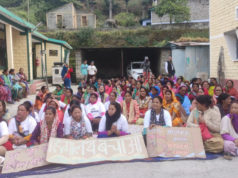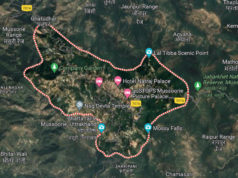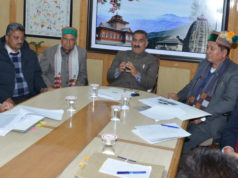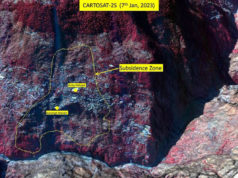In a significant move, the Centre has given the green light to a comprehensive recovery and reconstruction plan worth Rs 1,658.17 crore for the town of Joshimath in Uttarakhand. The decision was announced on Thursday by a high-level committee, led by Union Home Minister Amit Shah, marking a crucial step towards revitalizing the region, which faced severe challenges due to a landslide and ground subsidence earlier this year.
The approved Recovery and Reconstruction (R&R) plan allocates Rs 1,079.96 crore from the National Disaster Response Fund (NDRF) as central assistance. Additionally, the Uttarakhand government will contribute Rs 126.41 crore from its State Disaster Response Fund (SDRF) for relief assistance, and Rs 451.80 crore from its state budget, which includes a provision for land acquisition costs for resettlement amounting to Rs 91.82 crore.
Also Read: Joshimath Crisis – Are Himalayas Desperate for Breathing Space?
Joshimath, which witnessed the destructive forces of a landslide and ground subsidence, has received unwavering support from the central government, including both technical and logistical aid. The Prime Minister, Narendra Modi, has played a pivotal role in coordinating efforts, ensuring that all technical agencies under the guidance of the National Disaster Management Authority (NDMA) were actively involved in formulating an expedited recovery plan for Joshimath.
The three-year implementation of the recovery plan is designed to adhere to the best practices, Build Back Better (BBB) principles, and sustainability initiatives. Post-implementation, Joshimath is anticipated to emerge as a beacon of ecological sustainability, setting an example for other regions facing similar challenges.
Earlier this year, the town faced a crisis marked by cracks and fissures in houses and on the ground, prompting authorities to evacuate residents, especially those in the worst-hit areas of Sunil, Singdhar, and Marwari, to temporary relief centers. A report from scientific and technical institutions studying land subsidence in Joshimath, made public in September, attributed the crisis to various factors, including the town’s location on a slope over morainic deposits, population pressure, construction practices, and the absence of a proper water disposal system.
The institutions involved in the study, such as the Central Building Research Institute, Central Ground Water Board, Geological Survey of India, Indian Institute of Remote Sensing, Indian Institute of Technology-Roorkee, National Institute of Hydrology, National Geophysical Research Institute, and the Wadia Institute of Himalayan Geology, played a crucial role in understanding the multifaceted challenges faced by Joshimath and contributed valuable insights towards the formulation of the recovery plan.









